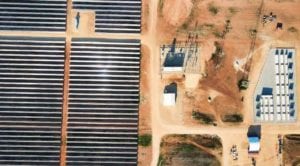UK billionaire Sanjeev Gupta is laying down a challenge to the coal and gas industry by putting forward a $1 billion plus solar and storage proposal in the federal Coalition’s planned tender for new 24/7 power generation.
The proposal from Gupta’s Australian energy offshoot, Simec Zen Energy, is in line with its previously announced plans to power the Whyalla steelworks he now owns – along with other large energy users – with cheap reliable power via a mix of large scale solar, battery storage and pumped hydro.
News of Gupta’s proposal comes as the government confirms that 66 different projects were put forward in response to the government’s request for proposals, with gas plants forming the largest number, and plans for new coal plants, expansions and extensions accounting for another 10 coal investments.
The biggest among these is a $6 billion proposal for two new coal plants in Victoria, put forward by Trevor St Baker, the co-owner of the ageing Vales Point coal generator in NSW. Any such move would likely need an indemnity from the federal government against a future carbon price, potentially costing around $7 billion, analysts and industry bodies say.
It is also thought that St Baker has other proposals in the mix, including an expansion or rebuild of Vales Point itself, with the addition of some solar, and another proposal based around the 230MW Goat Hill pumped hydro project in South Australia, which coincidentally formalised an application for a generation licence this week.
That project, near Port Augusta, proposes eight hours of storage, and it is seeking a licence “as soon as possible” even though the plans appear to have been on the drawing board since 2017.
Gupta’s plans, however, emerge as a significant challenge to the push by the coal lobby to fulfil the wish by many in the Coalition and their funders to breathe new life into the coal industry, if not into the atmosphere.
Simec Zen may not be the only party with a proposed combination of wind or solar with battery or pumped hydro storage, but it is likely the only one that can guarantee and off-take agreement – with Gupta’s own steelworks.
Gupta said last year that the government tender had the potential of significantly reducing the cost of solar and storage, given the certainty of a government underwriting agreement would significantly lower the cost of finance.
He said then that the cost of solar could fall into the $20-$30/MWh, significantly lower than anything that could be offered by a new coal generator.
The Australian Energy Market Operator and the CSIRO are in no doubt that solar and wind combined with batteries and or pumped hydro offer the cheapest option for dispatchable power, even without factoring in the cost of emissions.
Simec Zen’s proposal is to combine solar, battery storage (Gupta has previously flagged a battery of 140MWh, bigger than the Tesla big battery at Hornsdale), and longer-term storage via pumped hydro using pits from the nearby iron ore mines that once supplied the steel smelter.
The pumped hydro facility at the Middleback mine would deliver around 110MW and six to eight hours of storage, but the capacity could be doubled to 220MW should an upgrade to the transmission line to the Eyre Peninsula proposed by ElectraNet go ahead. That would take the total cost of the Simec Zen proposal to around $1.3 billion.
Still, the federal government faces an extraordinary task to try and complete its tender process, asking for firm proposals, finalise negotiations with its preferred winner(s) and get a contract into place by the middle of April, when it is assumed it will enter a caretaker period ahead of a mid-May election.
That is just 10 weeks away – little time for an exhaustive process that might be expected of such a commitment. Energy minister Angus Taylor may have to content himself with government approval of the Snowy 2.0 pumped hydro scheme proposed by its wholly owned energy utility Snowy Hydro.
Taylor’s grandfather was one of the principal architects of the original Snowy Hydro scheme, and it would likely tick most boxes for the Coalition, even it was the pet project of the leader they deposed, Malcolm Turnbull, and there are still questions about its economics, environmental impact and engineering.










